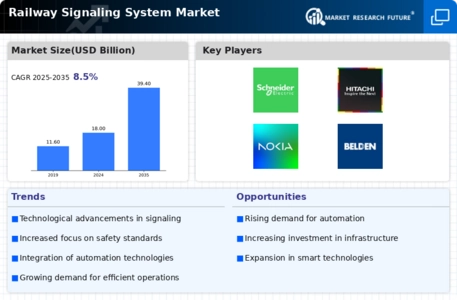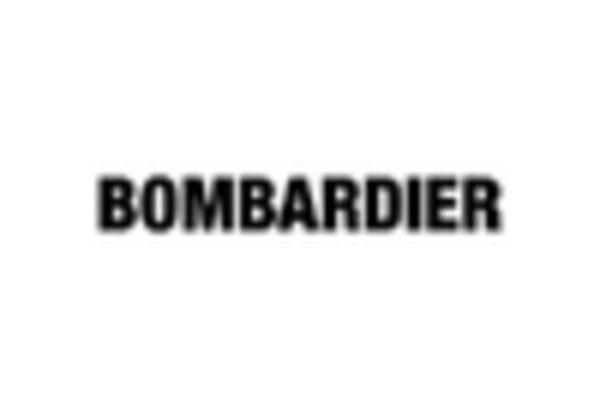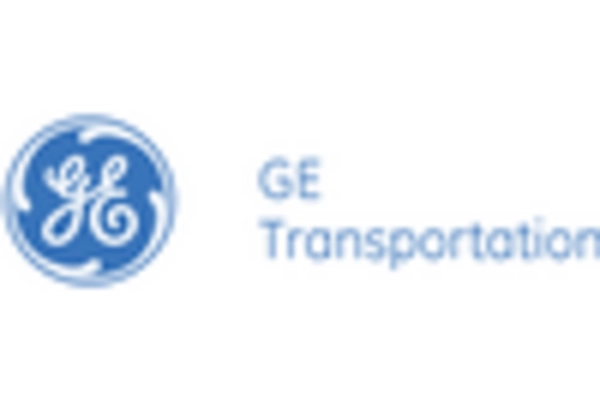Market Share
Railway Signaling System Market Share Analysis
In the competitive landscape of the Railway Signaling System Market, companies employ various market share positioning strategies to gain an edge over their rivals. One prevalent approach is differentiation, where companies emphasize unique features or benefits of their signaling systems compared to others in the market. For example, a company might highlight advanced safety features or compatibility with emerging technologies, such as artificial intelligence or IoT integration. By positioning their products as superior in certain aspects, companies aim to attract customers seeking specific functionalities or performance metrics.
Another commonly used strategy is cost leadership, wherein companies focus on offering signaling systems at lower prices than their competitors while maintaining acceptable quality standards. This strategy appeals to budget-conscious customers or markets where price sensitivity is high. By optimizing production processes, sourcing materials efficiently, or leveraging economies of scale, companies can lower their production costs and pass on the savings to customers. Additionally, strategic partnerships with suppliers or outsourcing certain manufacturing processes can further reduce costs, enabling companies to offer competitive pricing.
Furthermore, market segmentation plays a crucial role in market share positioning strategies within the Railway Signaling System Market. Companies identify distinct customer segments with unique needs or preferences and tailor their products or marketing efforts accordingly. For instance, a company might develop specialized signaling systems tailored for high-speed railways, urban metro systems, or freight transportation networks. By understanding the specific requirements of each segment, companies can address niche markets effectively and establish themselves as leaders in those segments.
Additionally, innovation and continuous product development are key drivers of market share positioning strategies in the Railway Signaling System Market. Companies invest in research and development to introduce new features, functionalities, or technologies that address evolving industry trends or regulatory requirements. By staying ahead of the curve and offering cutting-edge solutions, companies can attract early adopters and maintain a competitive advantage over rivals. Moreover, patents or intellectual property rights resulting from innovation efforts can further solidify a company's market position and create barriers to entry for competitors.
Collaboration and strategic alliances also play a significant role in market share positioning strategies within the Railway Signaling System Market. Companies often form partnerships with other industry players, such as railway operators, technology providers, or government agencies, to leverage complementary strengths or resources. For example, a signaling system manufacturer might collaborate with a railway operator to co-develop customized solutions or participate in pilot projects to demonstrate the effectiveness of their products. By forging strategic alliances, companies can access new markets, distribution channels, or technical expertise, enhancing their competitive position in the market.
Moreover, effective marketing and branding strategies are essential for successful market share positioning in the Railway Signaling System Market. Companies invest in building strong brand identities and communicating their value proposition to customers through various channels, such as advertising, trade shows, or digital marketing campaigns. By establishing a positive brand image and conveying trust, reliability, and expertise, companies can differentiate themselves from competitors and influence customer perceptions. Additionally, cultivating relationships with key stakeholders, such as regulatory authorities or industry influencers, can further enhance brand reputation and credibility in the market.
In conclusion, market share positioning strategies in the Railway Signaling System Market are multifaceted and dynamic, driven by factors such as differentiation, cost leadership, market segmentation, innovation, collaboration, and branding. Companies employ a combination of these strategies to carve out a competitive position in the market, attract customers, and achieve sustainable growth. By understanding the unique needs of customers, staying abreast of industry trends, and leveraging their strengths effectively, companies can navigate the complexities of the market and emerge as leaders in the Railway Signaling System industry.

















Leave a Comment